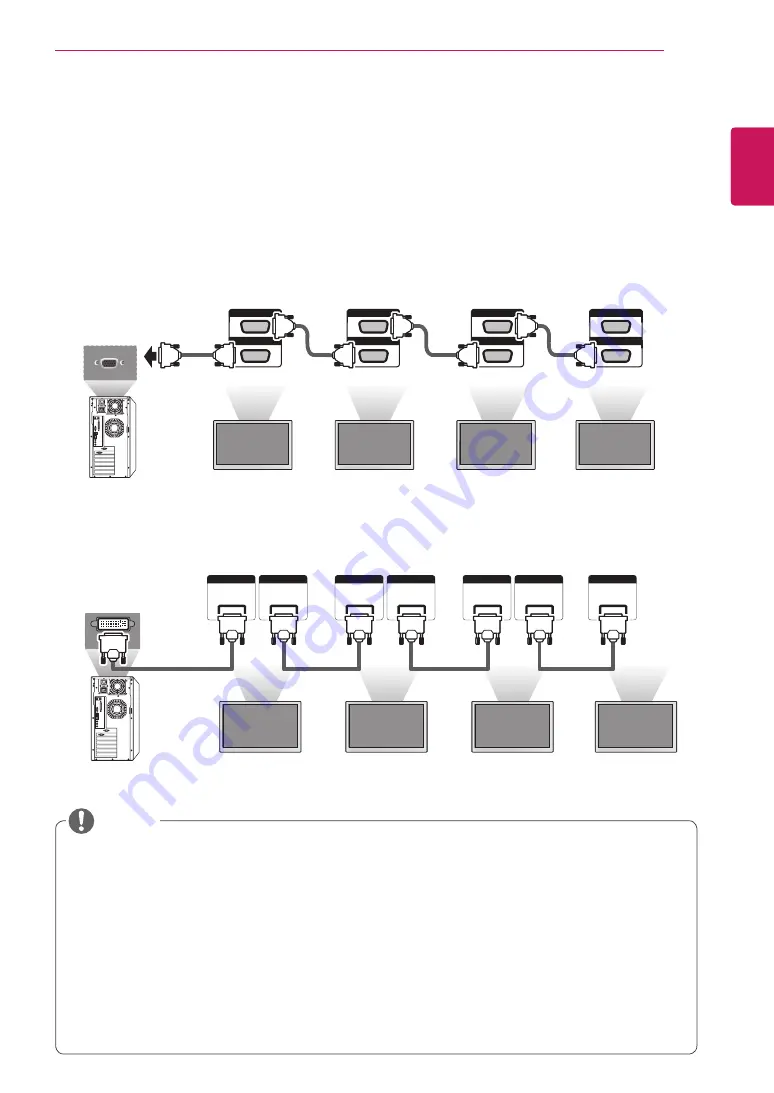
57
ENG
ENGLISH
MAKING CONNECTIONS
Daisy Chain Monitors
Use this function to share the RGB video signal with other monitors without having to use a separate signal
splitter box.
• To use different products connected to each other Connect one end of the signal input cable (15-pin
D-Sub Signal Cable) to the RGB OUT connector of product 1 and connect the other end to the RGB IN
connector of other products.
DVI IN
DVI OUT
DVI IN
DVI OUT
DVI IN
DVI OUT
DVI IN
RGB
/COMPONENT OUT
RGB
/COMPONENT IN
RGB
/COMPONENT OUT
RGB
/COMPONENT IN
RGB
/COMPONENT OUT
RGB
/COMPONENT IN
RGB
/COMPONENT OUT
RGB
/COMPONENT IN
Monitor SET 1
Monitor SET 2
Monitor SET 3
Monitor SET 4
RGB Cable
15-pin D-Sub Signal Cable
(Max 3m)
DVI Cable
DVI IN
DVI OUT
DVI IN
DVI OUT
DVI IN
DVI OUT
DVI IN
RGB
/COMPONENT OUT
RGB
/COMPONENT IN
RGB
/COMPONENT OUT
RGB
/COMPONENT IN
RGB
/COMPONENT OUT
RGB
/COMPONENT IN
RGB
/COMPONENT OUT
RGB
/COMPONENT IN
DVI Cable
(Max 3m)
Monitor SET 1
Monitor SET 2
Monitor SET 3
Monitor SET 4
y
y
When multiple monitors are connected in RGB input, it is recommended to use a distributor to avoid
signal degradation and cable loss.
y
y
For DVI, in general, up to 12 monitors can be connected via the DVI Out port (at the recommended
resolution) if the signal is stable and there is no cable loss.If you want to connect more than this
number of monitors, we recommended that you use a distributor.
y
y
When the tile mode is configured via DVI cables, only the monitor that receives first signals can play
HDCP-encrypted content. (The DVI Out port does not support HDCP.)
y
y
If the signal cable between the product and your PC is too long, make sure to use the DVI (RGB)
booster or DVI (RGB) optical cable.
y
y
If input signals are received through the HDMI/DP cable, multiple monitors cannot be connected via
the DVI Out port.
NOTE
















































